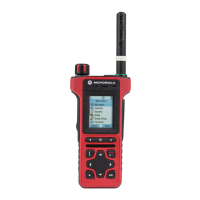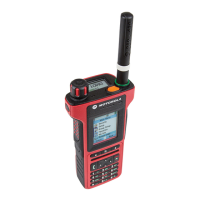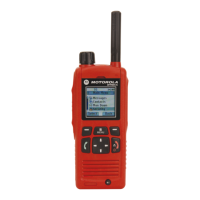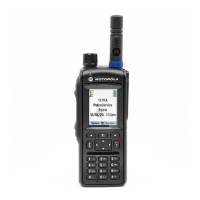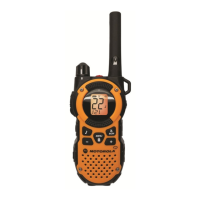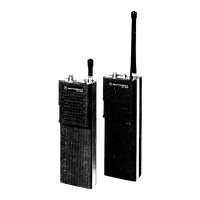3 A frequency range specification, using a specific offset, that can be preprogrammed in the factory. The system
operator can modify this range using the programming tool. Then the radio scans all frequencies in 25 kHz
intervals in the specified range.
4 An additional frequency range specification. Having two separate range specifications allows for two non-
contiguous blocks of frequencies or two different offsets.
Control Channel Selection
Each TDMA frame on a given carrier is comprised of four time slots, of which any can be used as a physical channel.
The following types of physical channels are available:
• Traffic physical (TP) channel — used primarily for circuit call traffic.
• Control physical (CP) channel — dedicated only for signaling.
• Packed Data Control (PDCH) channel — dedicated for Packet Data traffic.
• Unallocated physical (UP) channel.
The following types of control channels are available:
• Main Control Channel (MCCH) — occupies the first slot of the main carrier.
• Secondary Control Channel (SCCH) — can be used to extend Control Channel capacity.
The following types of SCCH are available:
• Common SCCH
• Assigned SCCH
In addition to the MCCH, a cell can have up to three common SCCHs, which could occupy slots 2, 3 and 4 in the
main carrier. This solution provides the ability to distribute the radio population among up to four channels and so to
increase Control Channel capacity (at the expense of traffic channel capacity).
Until having received a specific parameter on a cell, the radio uses the MCCH. When the signal is received, each
radio maps itself to a particular common SCCH, and that SCCH operates as the MCCH for the radio.
SCCH is a selling feature.
Multi-System Operation
The radio holds a list of up to 100 allowed network identities – Mobile Country Code (MCC)/Mobile Network Code
(MNC) combinations, that are considered friendly networks. The first network in this list must be the radio home
network. Each network can have an associated name that can indicate to the user which network it is. The radio can
perform initial cell selection and registration on these networks and only these networks. Registration on any of these
networks is performed using the radio ISSI and without migration signaling. The same ISSI is used on all networks.
You can limit registration to the home network only, or to a selected network only, and to ignore the other allowed
networks.
In case the migration defined by ETSI standard is NOT supported by the BTS, multi-system operation is only
supported as follows:
You can change the network mode using the MMI. A top-level menu item called Networks Sel allows choosing
between Home Only, Select Net and Any Net. If the radio chooses a network different from the current one, the
radio forces initial cell selection to find a cell that belongs to the home or the selected network. In the selected
network option, a list of network names (where each network name corresponds to one of the MNIs in the list) is
displayed. The network names are provisioned in the radio as part of provisioning of the MNI list. The network alias
or MNI of the current network is displayed on the first line of the idle display.
Home Only
In this mode the radio recognizes only the first system in the allowed list. As a result, the radio registers only on its
home network, even if a foreign network is in range and is found first.
Services and Features | 51
| | Send Feedback
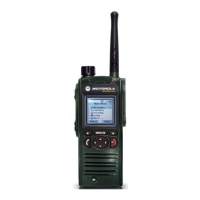
